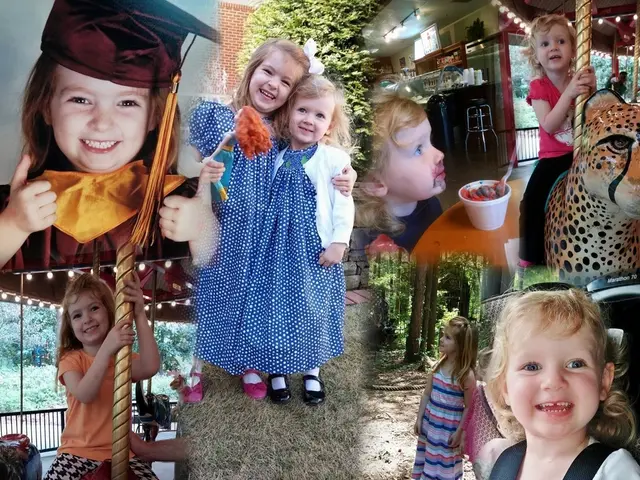Strategies for ascending the hierarchy of fundamental desires
In his book "Toward a Psychology of Being," Abraham Maslow introduced eight behavioral models that can help individuals find their path to self-realization and self-actualization. These models, which reflect different approaches to realizing one's potential and meeting needs beyond the basic levels, are essential tools for those seeking personal growth and fulfillment.
The first set of models, known as Deficiency Motivation Behaviors, focuses on fulfilling unmet deficiency needs, such as physiological, safety, love/belonging, and esteem. These behaviors are crucial for survival and well-being, but they are not the end goal.
The second set, Being Motivation Behaviors, is oriented towards growth needs. This includes creativity, morality, and problem-solving aligned with self-actualization. The self-actualizing style, a pattern that embraces spontaneity, autonomy, appreciation of life, and peak experiences, is a prime example of this set.
Other models include the Jonah Complex, a fear of realizing one's potential that can lead to avoidance behaviors; the Neurotic Style, characterized by defensiveness and rigidity that inhibit growth; the Creative Style, marked by openness, curiosity, and innovation; the Problem-Centered Style, focused on meaningful issues beyond self, contributing to social betterment; and the Acceptance Style, which promotes tolerance, non-judgmental awareness, and acceptance of self and others.
These models represent a spectrum from survival-focused behavior to transcendent, self-actualizing actions. Maslow emphasized that movement through these behavioral styles reflects progression through his hierarchical needs, which include the classic five levels: physiological, safety, love/belonging, esteem, and self-actualization.
It's important to note that self-actualization, the top priority in Maslow's hierarchy, has no universal formula. Each individual must study their "self" and listen to their inner voice to find themselves. Pursuing perfection may bring suffering and may not be suitable for everyone.
Recognizing peak experiences, brief moments of self-actualization, is also crucial. These moments can help identify true potential and guide self-actualization. People who have achieved self-actualization have an unconscious ability to immerse themselves in the present moment.
Maslow introduced the concept of the hierarchy of needs in 1943, and his work continues to be a valuable resource for those seeking personal growth and self-actualization. However, it's essential to remember that self-actualization is a long, continuous process that requires always making choices from a self-development perspective.
In conclusion, Maslow's behavioral models serve as guides to help individuals identify their behavioral tendencies and barriers, enabling them to consciously cultivate the traits that align with their higher needs for growth, purpose, and self-realization. For a detailed study of these eight behavioral models, consulting Maslow's original "Toward a Psychology of Being" edition is recommended.
Education and self-development can be facilitated by studying Maslow's eight behavioral models, as they provide essential tools for those seeking personal growth and self-actualization. Personal growth involves moving from survival-focused behavior to transcendent, self-actualizing actions, and recognizing peak experiences can help identify an individual's true potential and guide self-actualization.




